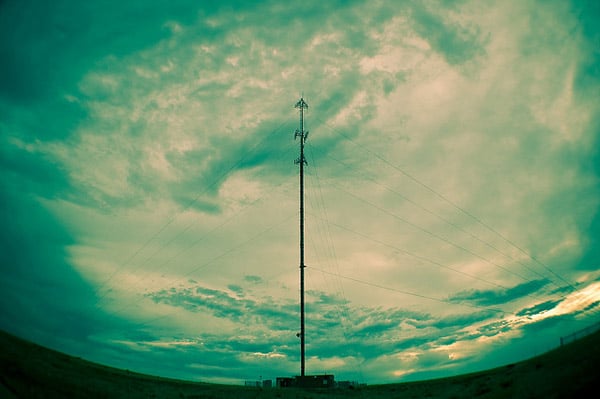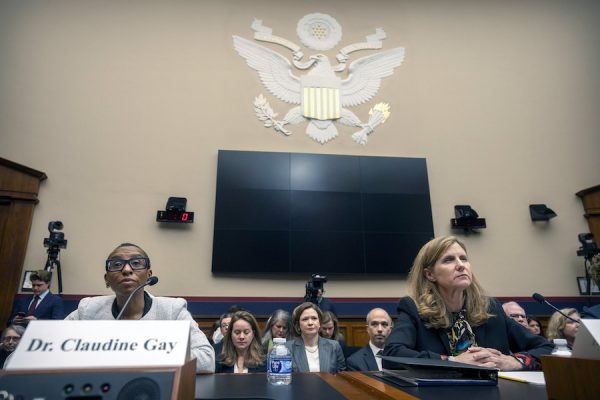Did you know that when you buy a mobile phone, you waive any right to privacy in your movements? Did you know that your voluntary decision to use a mobile phone is a voluntary decision to let the government track you wherever you go?
Such a state of affairs might seem to defy common sense. It might seem like the premise of a dystopian science fiction movie. But in Texas, Louisiana, and Mississippi, it is currently what federal statutory law and the Constitution permit. In a case decided last week, the U.S. Fifth Circuit Court of Appeals, which has jurisdiction over those three states, ruled that location information revealed by cell phone tower records is not something in which citizens have a “reasonable expectation of privacy.” These records can provide extremely accurate details on a person’s movement and whereabouts at any given time.
Location privacy is one of many legal questions made more complicated by modern digital technologies. But the Supreme Court has strongly hinted that location privacy is important and should be protected by the Constitution. Last year in United States v. Jones, the Court ruled that the police need a warrant before they place a GPS tracking device on a private car. A majority of the Court seemed anxious about the risk to civil liberties posed by the vast amounts of data about our lives newly available in the digital era.
But Jones involved surveillance carried out by a physical device planted on a car, not pure data held by others. The Court has not addressed this more important question of surveillance based on data obtained from third parties. Other courts have, however, and have not always agreed with the Fifth Circuit. Last month the New Jersey Supreme Court reached the opposite conclusion, reasoning that warrants are required before the police can monitor a person’s movements, whether using location data from phones or GPS devices. Massachusetts’s high court has reached a similar decision.
The new form of data-based surveillance raises a simple question: Should surveillance law focus on physical intrusions, which are easier to measure, or should it focus more broadly on the individual being watched and on the power that surveillance affords the state?
While this question is a pressing one for our digital age, it has a long and important pedigree, beginning in the days of prohibition.
Cell phone location tracking fundamentally changes the power relationship between citizens and police.
Roy Olmstead, a former Seattle policeman, was the biggest bootlegger in the Pacific Northwest. He was eventually undone by a massive police investigation that relied on warrantless wiretapping of his phones. The Supreme Court upheld his conviction in 1927, holding that because the wiretaps took place on phone wires owned by the phone company (a third party), there was no violation of the Fourth Amendment. Under this view, if there were no physical trespasses by the police, there could be no violation of the Fourth Amendment.
Justice Louis Brandeis dissented in Olmstead v. United States (1928), arguing that the Fourth Amendment should be understood not on the basis of narrow and outdated concepts such as physical trespass, but rather in response to broader issues of privacy and limitations on state power. Brandeis’s idea of the Fourth Amendment was less simple than the Court’s, but it was less simplistic, too, and better suited to the complexities of an electric and then electronic age. The Supreme Court eventually agreed, ruling in Katz v. United States (1967) that the Fourth Amendment required police to get a warrant before they listened to a person’s phone conversations in a public phone booth. This was the case because the Fourth Amendment protects a person’s right to privacy generally and is not limited to narrow physical intrusions.
Even after Katz and Jones, though, the law is muddled, as the Fifth Circuit case shows.
The new case arose from the fact that all mobile phones need to communicate with cell towers in order to function and need to be within a particular tower’s radius in order to send or receive calls. Because we need to receive calls, this communication happens constantly, even when we are not talking on our phones. Telephone companies log this information, which creates a record of the towers a given phone has contacted and when. This record serves as a map of our movements, albeit one that is less precise than GPS tracking would provide.
In the new case, the police obtained location maps from a phone carrier, arguing that because there was no physical intrusion, and because the map was held by a third party, no warrant was required. The Fifth Circuit agreed, adopting the old, narrow view regarding physical intrusion. The opinion went on: “A cell service subscriber, like a telephone user, understands that his cellphone must send a signal to a nearby cell tower in order to wirelessly connect his call,” which creates third-party records the police can, according to the Stored Communications Act, monitor warrant-free. If people want more protection, the ruling holds, they should obtain it through market or political pressure, not through the Constitution. After all, according to the 2-1 opinion, the use of mobile phones “is entirely voluntary.”
The Court’s adoption of the narrow view of the Fourth Amendment is misguided. It repeats the errors of Olmstead, which the Supreme Court jettisoned in Katz. It uses a simple test—where is the data?—that ignores the realties of the digital age, in which data that individuals reasonably think of as private is stored and collected in the cloud and in the hands of third parties we should be able to trust. In the telephone age, we protected the contents of telephone conversations even though those conversations were transmitted along wires owned and controlled by the phone companies. We should do the same in the digital age for location data.
It is tempting to argue that there is no right to protect one’s location data. After all, the government has always been able to know where the mail in an envelope is addressed. But location data is fundamentally different from old-fashioned “metadata,” such as addresses, in two respects. First, modern data analytic techniques allow much more information to be extracted from metadata and location data than was dreamed of in the past. Second, and more importantly, location data is not analogous to knowing where you live in order to send you a letter. A better analogy is to having a police officer follow you around wherever you go, tracking your movements around the clock. This is a new power; one that fundamentally changes the power relationship between citizens and the police—who are, let us not forget, public servants. It is the kind of power—like entering homes, listening to phone calls, and rummaging though personal papers—that should be regulated by a neutral judge rather than by a curious or potentially misbehaving policeman.
A better approach for the Fifth Circuit would have been to follow the lead of Justice Brandeis in Olmstead. Brandeis looked past whether an act was a trespass or was voluntary. He asked why communications privacy mattered and explained that the ability to have private communications is an important civil liberty reflected in the protection of postal letters from government censors. The Fifth Circuit instead ignored the briefs from amicus curiae such as the Electronic Frontier Foundation, which argued that location privacy is important because it can reveal where we worship, whom we visit, and where we go. The data obtained via cell tracking can reveal participation in a political meeting or protest. This is the sort of secret surveillance that changes the power relationship between the state watcher and the watched citizen, with real consequences for the kind of democratic society we will create in the digital age.
The Fifth Circuit’s decision reflects at bottom a failure to reckon with the information revolution we are living through. This revolution is every bit as profound and transformative as the industrial revolution of the 19th century. Those technological changes forced us to think anew about property, regulation, civil liberties, slavery, and the nature of democracy. The decisions we make today—about warrantless access to records held by third parties, NSA monitoring of digital communications, hate speech online, etc.—will be sticky. They will set the norms for the future, and those norms will become as natural as our longstanding belief that in a free society, the government needs a compelling reason to open our mail and wiretap our phones. We must think in the broad way, not in the narrow one.
It is from this perspective that the Fifth Circuit’s notion of “voluntary” cell phone use seems most absurd. If a technology—such as mobile phones, or central heating, telephones, cars, or computers—becomes an essential part of modern life, we should protect its use. We should think of ways to build our civil liberties around and into those technologies, rather than leaving them by the side of the road. Otherwise we face a digital future in which civil liberties only apply to non-digital technologies. A future, in other words, in which civil liberties exist on paper, but nowhere else.








